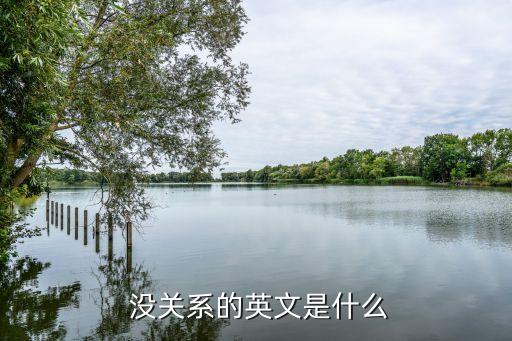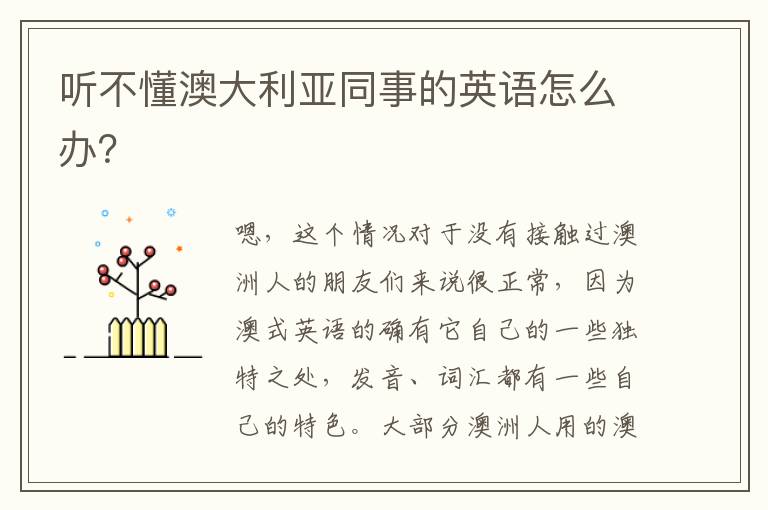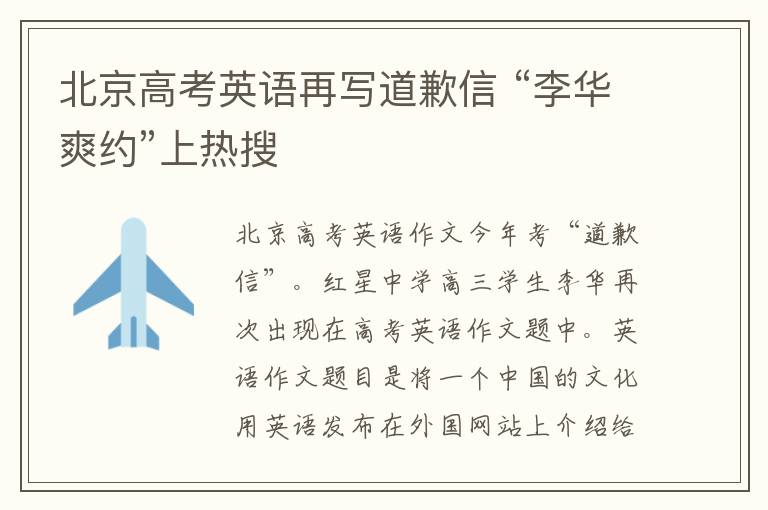大学英语四级阅读的200篇: Unit 41 passage 1

The first railroads, which were only a few miles long, grew until they eventually spanned the continent. Whether they were large or small their pattern was very much the same. The great iron horses followed routes worn earlier by four-legged horses and even earlier by parties of Indians. These pathways were mostly determined by geography, because man has always sought the easiest route to travel. He has found his way across plains and along meandering streams. When confronted by mountains, he has preferred to discover a pass rather than to ascend the peaks or to bore this way through them. In that sense we can say that the routes of our railroads were determined to a large extent before man ever existed.
The cars of the first crude trains, used before the War of 1812, were drawn by horse. These early railroads served only local needs. Sometimes they were used in connection with canals; on other occasions they performed various transportation chores for local mines or factories. They did little or nothing to
meet the needs of people who wished to travel. The first successful use of steam to move trains was achieved in England in 1829. A locomotive invented by George Stephenson made history when it hauled a train at the rate of 15 miles per hour. Trains were first moved by steam over American railroads inl830. By that date the Baltimore and Ohio Railroad had completed construction of its tracks from Baltimore to Ellicotts Mills, a distance
tof about 13 miles. The famous locomotive Tom Thumb made the trip in one hour. Other experiments proved successful about the same time. The Mohawk and Hudson Railroad built tracks between Albany and Schenectady using another famous locomotive, named the De Witt Clinton , which had been built in New York State. It completed a successful trip in 1831 and at times achieved a speed of 30 miles per hour. Another notable achievement was accomplished by the Philadelphia, Germantown and Norristown Railroad in 1832. This railroad used still another famous locomotive named Old Ironsides , which had been built in the foundry of M. W. Baldwin at Philadelphia. It not only reached but maintained a speed of 28 mile per hour. By 1840 there were 2,818 mile of railroad tracks in the United States.
Most of the tracks on these early railroads were made of wood covered with strips of iron, known in some areas as Black-Snake Rails . Sometimes they would become loosened where they were joined together, and the ends would suddenly shoot up through the wooden floors of the cars. In their snake-like way they would dart or glide in some unexpected direction. It was possible for some unlucky passenger to be impaled with one of these strips. These rails were a constant menace to the safety and the lives of the people on board. Trains carried sledge-hammers to pound the rails back in shape and sometimes the iron snakes had to be sawed off.
The early locomotives used wood as fuel and had greedy appetites. Sometimes it seemed impossible to keep an adequate supply of dry wood on hand. Showers of sparks from the chimneys fell on the passenger, the wooden cars and bridges, and the surrounding woods, wetting frequent fires. Clouds of smoke also added to the annoyance of passengers, and sometimes boilers would burst.
The early passenger coaches were uncomfortable because of their inadequate springs, hard seats, poor lights, and even poorer heating. Crude coupler, consisting of links with various types of iron bars and pins, were used to attach one coach to another. Brakes also were very unsatisfactory. This could result in an unpleasant experience for the passengers because of the assorted jerks and bounces as each car bumped into the one ahead. There were no signal lights, either of green or of red, to guide the train crews on their way. Various kinds of peculiar accidents could happen. On one occasion a railroad extended its roadbed over the bay of a lake by using a wooden bridge erected on wooden piling. In the spring when the ice went out of the lake some of the moving ice pushed the bridge down, causing the railroad to suspend operations temporarily. At one time or another, most communities were anxious to be served by the iron horse. Farmers and villagers frequently pooled their savings to invest in railroads that might come their way. Sometimes the schemes of the railroad builders were successful, causing infant communities to grow into cities, creating factory towns, and bringing prosperity to the citizens. More often the schemes failed, and the communities concerned frequently stood still or declined.
The expansion of railroads across the western part of the nation and the completion of the transcontinental lines were made very attractive by the national Congress. Huge grants of land were given by our government to the railroads to encourage them to build tracks. During one period of 21 years more than 1,500,000 acres of land were given to railroads. These land gifts made it possible for the railroads to be built, caused hundreds of western communities to be born and to grow, and sometimes brought great profits to those who owned the railroads. In the ten years between 1840 and 1850, over 6,000 additional miles of track were laid, bringing the total to 9,021 miles.
Still a railroad had not been laid from the Midwest to the Pacific Coast. Fame and fortune were destined to smile upon whatever railroad lines spanned the continent first, linking the Mississippi with the Pacific. In 1864 two railroads began building furiously toward each other. The Union Pacific Railroad was building westward across the Western Plains, across land populated only with Indians and buffaloes. The Central Pacific Railroad was building eastward from the Pacific Coast. They would meet somewhere; the more tracks either could lay the more free land it would receive. They finally did meet on May 10, 1869, in northern Utah. The tracks of the rival roads were fastened with spikes of gold and silver, and the two iron horses faced each other. Iron rails united the Far West and the East across the great width of our nation.
In 1883 the final spike was driven in western Montana to complete the first through track of the Northern Pacific. This track connected Seattle, Washington, and Portland, Oregon, with St. Paul, Minnesota. A little later other great continental railroads were built the Sante Fe, the Southern Pacific, and the Great Northern.
In 1898 electric locomotives were introduced. Many cities gave companies permission to lay tracks for electric trolleys in their streets. These street railways were soon extended to suburbs and then to other towns on inter-urban systems. This network of electric trains took business from the steam railroads, and the competition worried them.
Beginning in about 1910, however, the electric inter-urban trains began to lose business, and now they no longer exist. The automobile offered quicker passenger service and cheaper transportation of freight. So the automobile was responsible for ending the era of electric inter-urban trains.
1. The first railroads were mainly used to transport coal or industrial products.
2. Topography was the determinant of the routes of the earliest railroads.
3. The first steam train of America moved faster than that of England.
4. The early locomotives were rather uncomfortable and few passengers would like to be served by them.
5. Owing to automobile and air transportation, the railroads are suffering a lot at present.
6. Farmers were eager to invest their savings in railroads because they wanted their local governments to grant them more lands.
7. The passage gives a general description of the historical development of railroads.
8. In the decade of 1830-1840, _______miles of railroad tracks were built in the United
States.
9. It took_______years to build the transcontinental railroad of America.
10. With the emergence of_______, the age of electric inter-urban trains come to an end.
答案:1. Y 2. Y 3. N 4. N 5. NG 6. N 7. Y 8. 2805 9. 5 10. the automobile
The first railroads, which were only a few miles long, grew until they eventually spanned the continent. Whether they were large or small their pattern was very much the same. The great iron horses followed routes worn earlier by four-legged horses and even earlier by parties of Indians. These pathways were mostly determined by geography, because man has always sought the easiest route to travel. He has found his way across plains and along meandering streams. When confronted by mountains, he has preferred to discover a pass rather than to ascend the peaks or to bore this way through them. In that sense we can say that the routes of our railroads were determined to a large extent before man ever existed.
The cars of the first crude trains, used before the War of 1812, were drawn by horse. These early railroads served only local needs. Sometimes they were used in connection with canals; on other occasions they performed various transportation chores for local mines or factories. They did little or nothing to
meet the needs of people who wished to travel. The first successful use of steam to move trains was achieved in England in 1829. A locomotive invented by George Stephenson made history when it hauled a train at the rate of 15 miles per hour. Trains were first moved by steam over American railroads inl830. By that date the Baltimore and Ohio Railroad had completed construction of its tracks from Baltimore to Ellicotts Mills, a distance
tof about 13 miles. The famous locomotive Tom Thumb made the trip in one hour. Other experiments proved successful about the same time. The Mohawk and Hudson Railroad built tracks between Albany and Schenectady using another famous locomotive, named the De Witt Clinton , which had been built in New York State. It completed a successful trip in 1831 and at times achieved a speed of 30 miles per hour. Another notable achievement was accomplished by the Philadelphia, Germantown and Norristown Railroad in 1832. This railroad used still another famous locomotive named Old Ironsides , which had been built in the foundry of M. W. Baldwin at Philadelphia. It not only reached but maintained a speed of 28 mile per hour. By 1840 there were 2,818 mile of railroad tracks in the United States.
Most of the tracks on these early railroads were made of wood covered with strips of iron, known in some areas as Black-Snake Rails . Sometimes they would become loosened where they were joined together, and the ends would suddenly shoot up through the wooden floors of the cars. In their snake-like way they would dart or glide in some unexpected direction. It was possible for some unlucky passenger to be impaled with one of these strips. These rails were a constant menace to the safety and the lives of the people on board. Trains carried sledge-hammers to pound the rails back in shape and sometimes the iron snakes had to be sawed off.
The early locomotives used wood as fuel and had greedy appetites. Sometimes it seemed impossible to keep an adequate supply of dry wood on hand. Showers of sparks from the chimneys fell on the passenger, the wooden cars and bridges, and the surrounding woods, wetting frequent fires. Clouds of smoke also added to the annoyance of passengers, and sometimes boilers would burst.
The early passenger coaches were uncomfortable because of their inadequate springs, hard seats, poor lights, and even poorer heating. Crude coupler, consisting of links with various types of iron bars and pins, were used to attach one coach to another. Brakes also were very unsatisfactory. This could result in an unpleasant experience for the passengers because of the assorted jerks and bounces as each car bumped into the one ahead. There were no signal lights, either of green or of red, to guide the train crews on their way. Various kinds of peculiar accidents could happen. On one occasion a railroad extended its roadbed over the bay of a lake by using a wooden bridge erected on wooden piling. In the spring when the ice went out of the lake some of the moving ice pushed the bridge down, causing the railroad to suspend operations temporarily. At one time or another, most communities were anxious to be served by the iron horse. Farmers and villagers frequently pooled their savings to invest in railroads that might come their way. Sometimes the schemes of the railroad builders were successful, causing infant communities to grow into cities, creating factory towns, and bringing prosperity to the citizens. More often the schemes failed, and the communities concerned frequently stood still or declined.
The expansion of railroads across the western part of the nation and the completion of the transcontinental lines were made very attractive by the national Congress. Huge grants of land were given by our government to the railroads to encourage them to build tracks. During one period of 21 years more than 1,500,000 acres of land were given to railroads. These land gifts made it possible for the railroads to be built, caused hundreds of western communities to be born and to grow, and sometimes brought great profits to those who owned the railroads. In the ten years between 1840 and 1850, over 6,000 additional miles of track were laid, bringing the total to 9,021 miles.
Still a railroad had not been laid from the Midwest to the Pacific Coast. Fame and fortune were destined to smile upon whatever railroad lines spanned the continent first, linking the Mississippi with the Pacific. In 1864 two railroads began building furiously toward each other. The Union Pacific Railroad was building westward across the Western Plains, across land populated only with Indians and buffaloes. The Central Pacific Railroad was building eastward from the Pacific Coast. They would meet somewhere; the more tracks either could lay the more free land it would receive. They finally did meet on May 10, 1869, in northern Utah. The tracks of the rival roads were fastened with spikes of gold and silver, and the two iron horses faced each other. Iron rails united the Far West and the East across the great width of our nation.
In 1883 the final spike was driven in western Montana to complete the first through track of the Northern Pacific. This track connected Seattle, Washington, and Portland, Oregon, with St. Paul, Minnesota. A little later other great continental railroads were built the Sante Fe, the Southern Pacific, and the Great Northern.
In 1898 electric locomotives were introduced. Many cities gave companies permission to lay tracks for electric trolleys in their streets. These street railways were soon extended to suburbs and then to other towns on inter-urban systems. This network of electric trains took business from the steam railroads, and the competition worried them.
Beginning in about 1910, however, the electric inter-urban trains began to lose business, and now they no longer exist. The automobile offered quicker passenger service and cheaper transportation of freight. So the automobile was responsible for ending the era of electric inter-urban trains.
1. The first railroads were mainly used to transport coal or industrial products.
2. Topography was the determinant of the routes of the earliest railroads.
3. The first steam train of America moved faster than that of England.
4. The early locomotives were rather uncomfortable and few passengers would like to be served by them.
5. Owing to automobile and air transportation, the railroads are suffering a lot at present.
6. Farmers were eager to invest their savings in railroads because they wanted their local governments to grant them more lands.
7. The passage gives a general description of the historical development of railroads.
8. In the decade of 1830-1840, _______miles of railroad tracks were built in the United
States.
9. It took_______years to build the transcontinental railroad of America.
10. With the emergence of_______, the age of electric inter-urban trains come to an end.
答案:1. Y 2. Y 3. N 4. N 5. NG 6. N 7. Y 8. 2805 9. 5 10. the automobile









